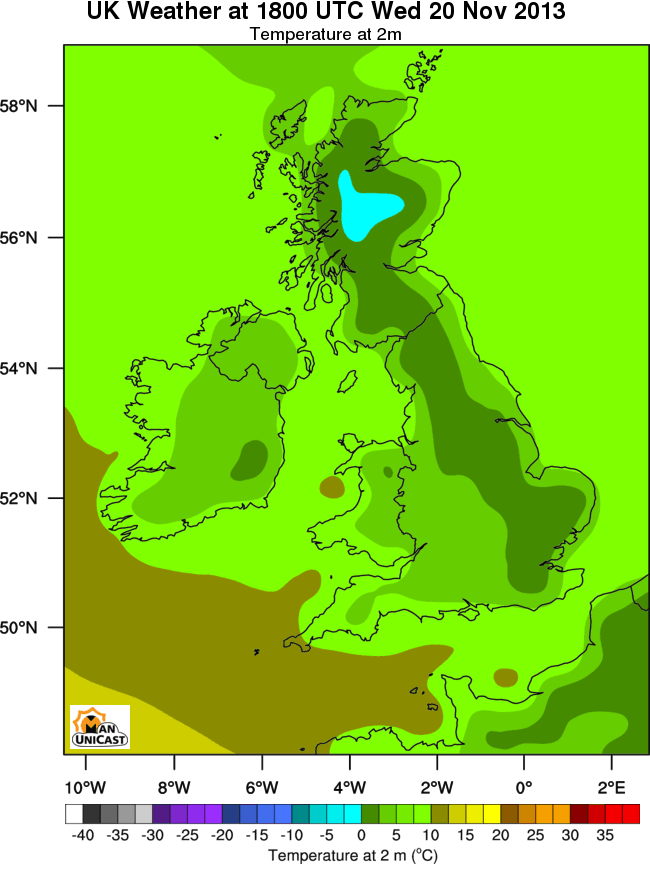The Forecast is Promising

“Don’t knock the weather. If it didn’t change once in a while, nine out of ten people couldn’t start a conversation…”
[Kin Hubbard]
ManUniCast is a publicly accessible weather and air quality forecasting tool accessed through modern web browsers. It aims to support the teaching in the School of Earth, Atmospheric and Environmental Sciences, while also educating the public about how weather and air-quality forecasts are made. The driving force behind ManUniCast is Prof. David Schultz, who approached the eLearning team with an idea which “came about because in the USA most universities that run meteorology programmes are running real time numerical weather prediction (NWP) models for educational purposes, but in the UK no university was doing that.”
The development of ManUniCast is important because learners can see how modern environmental prediction works. Having a tool that uses NWP gives learners an opportunity to see and work with real data – learning by doing. For many learners in the UK, the first time they get to see such models is when they do a PhD or when they start a job, but with ManUniCast this will no longer be the case.
We spoke to Prof. Schultz to find out more about his experience of working with EPS eLearning.
Q. Why did you approach the eLearning team to help with the development of ManUniCast?
I worked with the eLearning team previously. I was very pleased with their work, and we worked well together. ManUniCast is a more ambitious project. I couldn’t do it alone, I needed help. You guys had demonstrated expertise and it was great.
Q. What were the benefits of working with the eLearning team?
To do it ourselves it would have been functional, yes, but the innovations that you pioneered in meteorological analysis with this site are something that we would not have done because we had someone outside of our community thinking “what would be the best ways to do this – in terms of ergonomics and design”, stuff that we scientists would never think about. You knew implicitly. So it was a perfect marriage. If we had to do it ourselves, it would have been a disaster, I mean it would have been cheap and it would have looked cheap.
Q. How would you describe the working relationship you had with the team?
Great, can’t complain at all. I like them so much, I come back again, again and again. I think I know practically everyone in that office now.
Q. Are you happy with the results of the project?
Yes, the benefit to the learners is that now I can show them real time animations of the weather for the upcoming days in a way that they have been unable to see for the UK before. For the general public, eventually we’ll produce educational content for them and for learners and I hope it becomes a popular site to learn about how weather forecasts are made.
ManUniCast is available at: www.manunicast.seaes.manchester.ac.uk




